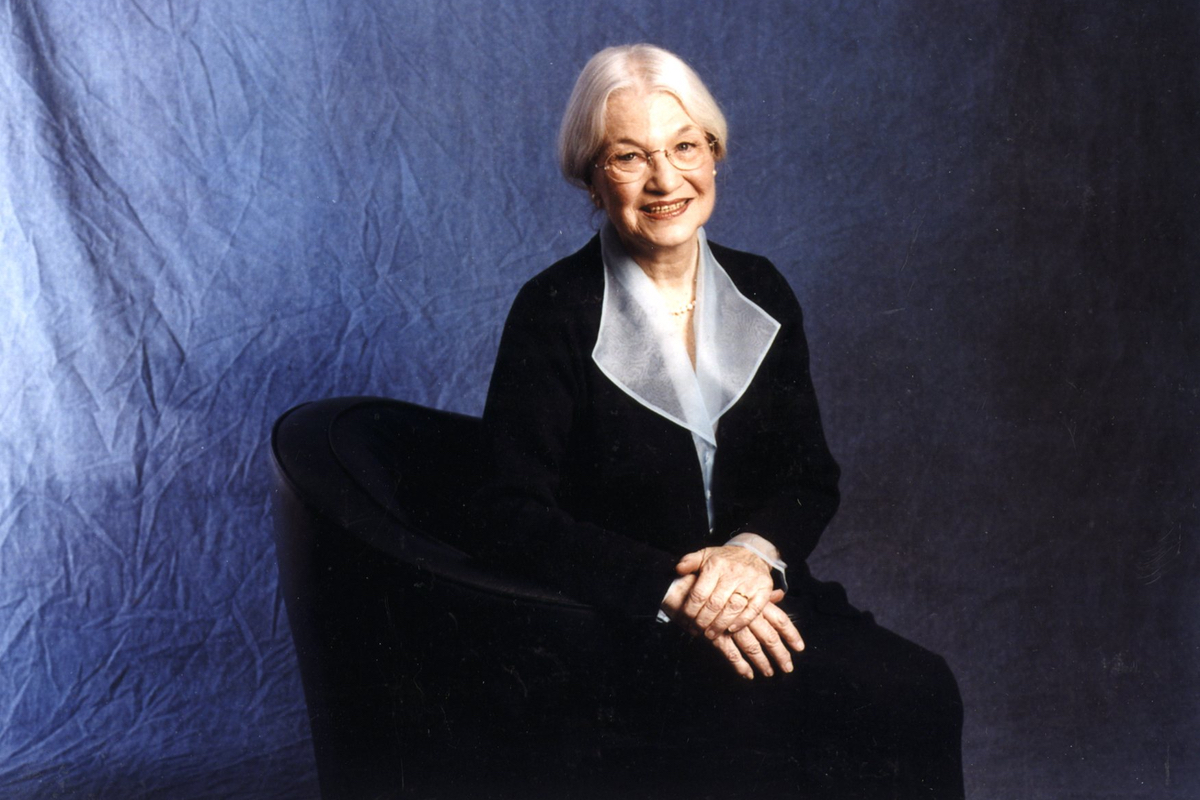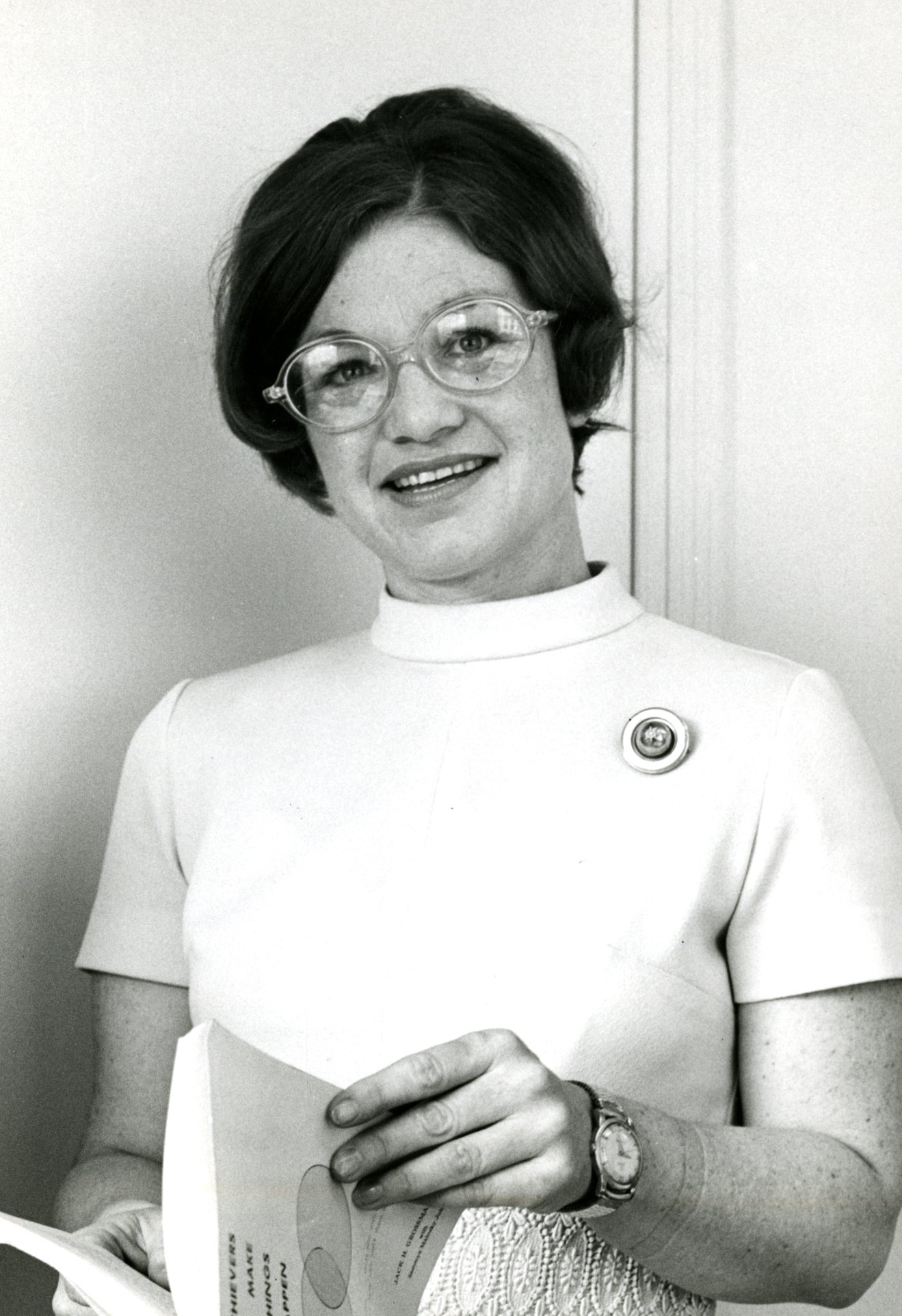 Sally A. Kitt Chappell in 2012. (Image courtesy of Special Collections and Archives)
Sally A. Kitt Chappell in 2012. (Image courtesy of Special Collections and Archives)
Sally A. Kitt Chappell, a respected architectural historian and beloved retired DePaul professor, died Aug. 2, 2021. She was 92.
Chappell joined DePaul's faculty in 1968 and taught for 26 years in the Department of Art, serving as its chair from 1977 to 1980. During Chappell's tenure, her tremendous commitment to liberal arts education, her passion for teaching and her extensive scholarly research contributed to the university's growth. She retired in 1994.
Mike Mezey, who served as dean of the College of Liberal Arts and Sciences, recalls her influence on new faculty as the university grew.
"Sally was a role model, particularly for female faculty, about how one could be a prolific scholar — as Sally was — an excellent teacher and a good citizen of the college," Mezey says. "She was involved in recruiting some of the best young art historians who came to DePaul and provided a foundation for what now is a very strong department. So she was, you might say, one of the founding mothers of that particular area of study."
 Sally Chappell, shown in an undated photo, taught 26 years in DePaul's Department of Art, chairing the department from 1977 to 1980. (Image courtesy of Special Collections and Archives)
Sally Chappell, shown in an undated photo, taught 26 years in DePaul's Department of Art, chairing the department from 1977 to 1980. (Image courtesy of Special Collections and Archives)
Chappell won several prestigious grants, including two federal grants for the DePaul Library and a $111,500 grant in 1984 from the National Endowment of the Humanities to direct its summer institute. Chappell organized the institute that brought faculty members from around the country to DePaul to study Chicago architecture.
"Without being overly dramatic about it, the current university stands on the shoulders of people like Sally," Mezey says. "People who were there when the university wasn't what it is now and who, through hard work, built what we currently have."
Chappell was a passionate teacher, deeply committed to the value of a liberal arts education for undergraduate students. She was the first DePaul faculty to earn the Sears Roebuck Teaching Excellence and Campus Leadership Award in 1990. The same year, DePaul awarded her the Rev. William T. Cortelyou-Martin J. Lowery Award for Excellence, the College of Liberal Arts and Sciences' highest faculty honor.
Pauline Saliga, who took some of her courses in the early 1970s, calls Chappell's teaching "beyond compare." Inspired in part by Chappell, Saliga pursued a career in architectural history. She now serves as executive director of the Society of Architectural Historians.
Saliga remembers how Chappell would start each class with a five-minute discussion about a current event or life decision she was wrestling with, then ask students to weigh in.
"That's one of the things that I learned from her that even the seemingly simplest questions do have a certain level of complexity, if you take the time to consider all sides," Saliga says. "And it's that critical-thinking aspect of her work that I still carry with me today, questioning and trying to get at the kernel of truth." Saliga co-wrote
an obituary for the society honoring Chappell.
Chappell was a respected voice on Chicago architecture, one of her research passions. She wrote extensively both for scholarly journals and the general public about architectural history, urban planning, city parks and landscape architecture. She authored several books, including
the first academic history of the architecture firm Graham, Anderson, Probst and White, which designed the famed Wrigley Building in Chicago. She also wrote
the first book about Cahokia Mounds from an architectural history viewpoint, and she completed
a guide to Chicago's parks and landscapes.
Chappell is survived by her husband of 44 years, Dr. Walter Kitt, three children, one stepchild, four grandchildren and one great-grandchild. Chappell earned her doctorate in architectural history from Northwestern University. She also held a bachelor's degree from Smith College and a master's from the University of Chicago. A memorial service will take place in the coming months.